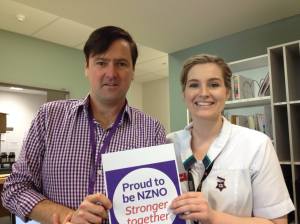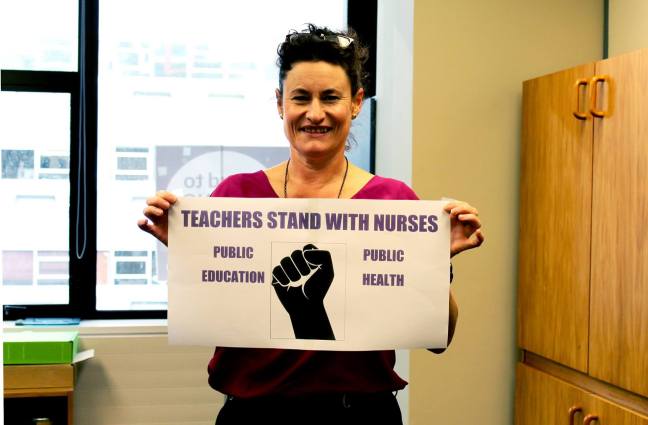JULY 12, 2018, is a day that will go down in New Zealand nursing history.
For just the second time, nurses in our public health system took nationwide industrial action, alongside midwives and health-care assistants (HCAs) covered by the district health board (DHB) multi-employer collective agreement (MECA).
For me, the hours I spent picketing and marching with my fellow NZNO members that day are the proudest moments of my nursing career.
NZNO members stood together. “Yes” voters, “no” voters and non-voters stood side by side, outside on the picket line, or inside, providing life-preserving services.

And now, three weeks later, DHB members are being asked to vote once again. They’re deciding whether to accept DHB offer number five – the third to be recommended by the NZNO negotiating team. As I write, the outcome of the vote is unknown. But what is clear is just how far we’ve come.
Back in November 2017, most members were being offered three pay increases of two per cent, over 33 months, and a lump sum of $350 (pro rata).
The DHBs had agreed in principle to support a pay-equity process, but there was no definite date for completion. They said, once again, they would implement care capacity demand management (CCDM) – this time, by June 30, 2021.
In February, after rejecting the first offer, we were told DHBs could not provide wage increases above two per cent, unless they were to resolve an anomaly like the identified senior nurse issue, or were achieved through a pay equity process.
But in this second offer, the lump sum was increased to $1050 and a deadline of July 1, 2019, was set for a pay-equity settlement.
Prime Minister intervenes
When that offer was also rejected, Jacinda Ardern was moved to speak up – the first time a New Zealand prime minister had intervened publicly in our bargaining – and proposed an independent panel. Our submission to the panel set benchmarks for appropriate pay ranges – $44,500 to $56,300 for an HCA, $57,500 to $61,500 for an enrolled nurse and $64,300 to $80,000 for a registered nurse or a midwife.
We rallied because #HealthNeedsNursing, and we marched so New Zealand would #HearOurVoices. When the third offer came in June, it was almost twice as big. The lump sum was bumped up to $2000. Pay rises ranged from 9.3 per cent to 15.9 per cent over 26 months.
Members were allowed to vote online for the first time, which led to the highest participation ever seen in a MECA ratification ballot.
An extra $38 million was pledged by the Government to employ 500 more nurses, and $10 million allocated for additional expert nursing staff to support implementation of CCDM. Recruitment of the extra nurses has already begun.
And now, at the end of July, after two further “reject” votes, Health Minister David Clark has put his signature to a new accord on safe staffing. The accord acknowledges that making sure there are enough nurses and midwives in our public hospitals to guarantee safety for staff and patients requires support from the Government. It strengthens commitments to deliver this by June 2021.
The journey so far has not been easy. But every one of these advances has been powered by the unity and determination of thousands of NZNO members, who should be enormously proud of themselves. •


















